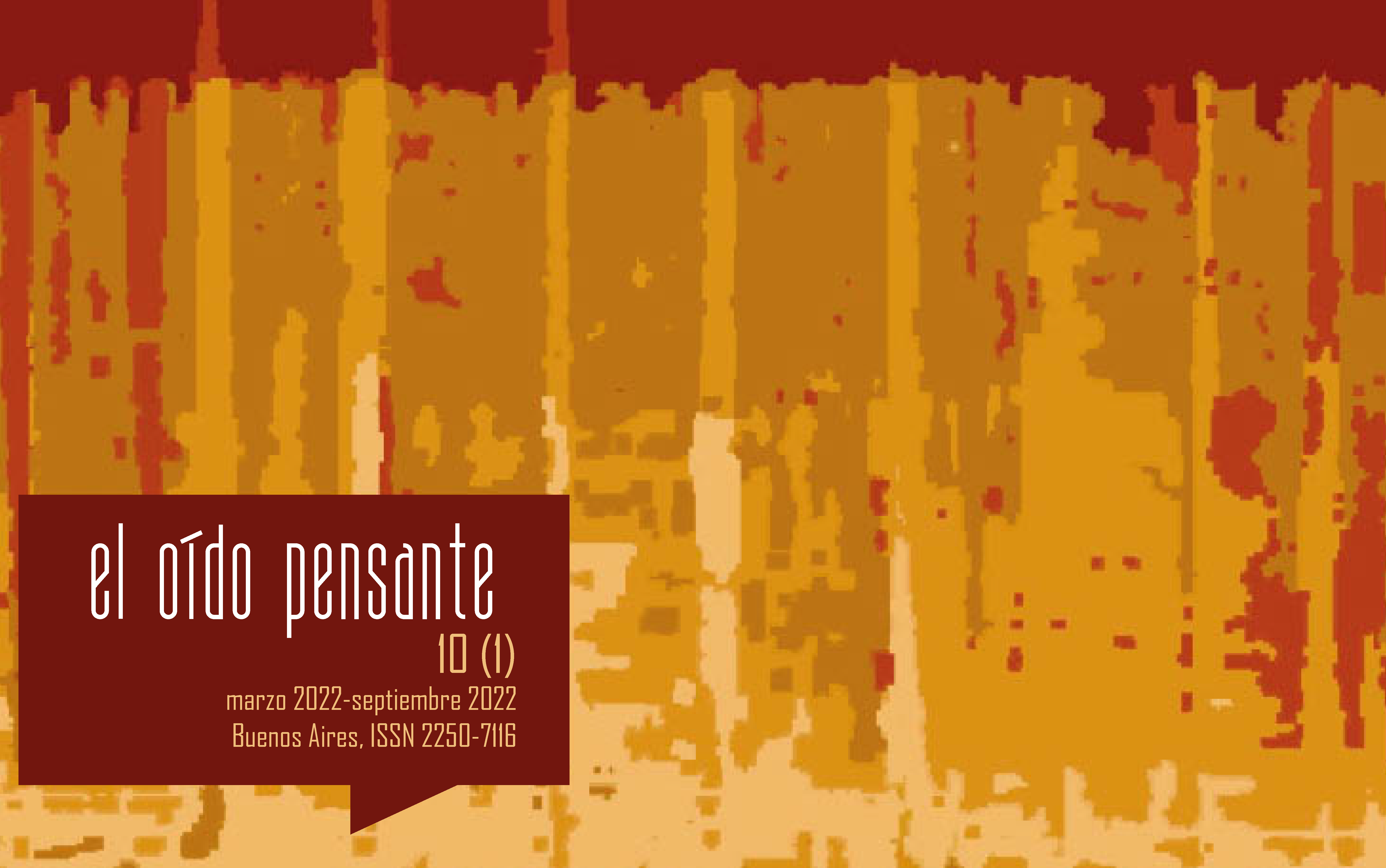Transculturation in the Cuban Clave: The Permanence of the Communication Support against the Colonization of Musical Writing
Abstract
When understanding music as a type of enunciation, and consequently as a type of writing, the revision is proposed of the hegemonic process by which music, in turn understood as a communication support system, has also been colonized. Given that many support, register and communication systems were a focus of attention for the colonization process in the Americas, it is inferred that the music also was, both in its ideological and technological dimensions. To define this, the concept of solfeización is used in this work in its validation of the score as the main structure and articulator of western musical theory, in contrast to the case study of Afro-Cuban music, specifically that of the Cuban clave: rhythmic structure that regulates much of the music of this tradition. Thus, we propose such element as an indicator that the ideological aspect in music has not been fully colonized in the Latin American region.Downloads
References
Álvarez, R. (1989). Caracterización de las agrupaciones de rumba en la ciudad de La Habana. Instituto Superior de Arte.
Arom, S. (2007). La boîte à outils d’un ethnomusicologie. Textes réunis et présentés par Nathalie Fernando. Montreal: Les Presses de l’Université de Montreal.
Baily, J. (2005). La théorie de la musique dans les cultures de tradidion orale. Musiques, une encyclopédie pour le XXI e siècle, Jean-Jacques Nattiez, editor, Paris, Actes Sud, 911-929.
Balen, N. (2006). Música Cubana. París: Editorial Fayard.
Billè, E. y Abba, J. (2018). Perpetuación de la herencia negra en la música afrocubana. Intercambio/Échange, 2, 113-126.
Blacking, J. (2006). ¿Hay música en el hombre? Madrid: Alianza Editorial.
Bourdieu, P. (2007). El sentido práctico. Buenos Aires: Siglo XXI.
Cereceda, V. (2010). Semiología de los textiles andinos: Las Talegas de Isluga. Revista de Antropología Chilena, 42(1), 181-198.
Chomsky, N. (1965). Aspects of the Theory of Syntax. Alabama, Cambridge: University of Alabama Press.
Cler, J. y Estival, J-P. (1997). Structure, mouvement, raison graphique: le modèle affecté. Cahiers d’ethnomusicologie, 10, 37-42.
Cornejo-Polar, A. (1997). Mestizaje e hibridez: los riesgos de las metáforas. Cuadernos de Literatura, 6, 5-12.
Crook, L. (1992). The Form and Formation of the Rumba in Cuba. En Boggs, V. (Ed.). Salsiology, Afro-Cuban Music and the Evolution of Salsa in New York City (pp. 29-42). New York: Greenwood Press.
Delannoy, L. (2001). ¡Caliente! Una historia del jazz latino. México: Fondo de Cultura Económica.
Estival, J-P. (1997). La rumba domestiquée. Une réflexion sur le rythme des percussions dans une musique afrocubaine. Cahiers d’ethnomusicologie, 10, 43-59.
Foucault, M. (1968). Las palabras y las cosas. Buenos Aires: Siglo XXI.
Gruzinski, S. (1991). La colonización de lo imaginario. Sociedades indígenas y occidentalización en el México español. Siglos XVI-XVIII. México: Fondo de Cultura Económica.
Hagedorn, K. (2001). Divine Utterances. The Performance of Afro-Cuban Santería. Washington, D.C: Smithsonian Books.
Hall, I. (2012). Labourer la terre, tisser la vie. Éclats d’analogies dans les Andes sud-péruviennes. Journal de la societé des américanistes, 98(1), 101-131.
Herskovits, M. (1938). Acculturaion: The study of Culture Contact. New York: J.J. Augustin.
Labarthe, G., Paerli, C. y Orovio, H. (1997). La musique cubaine racontée à la première personne. Cahiers d’ethnomusicologie, 10, 291-301.
Labov, W. (1972). Sociolinguistic Pattern. Philadelphia: University of Pennsylvania Press.
Molino, J. (2009). Le singe musicien. Paris: Actes Sud/INA.
Nattiez, J-J. (1988). De la sémiologie à la musique. Montreal: Univ. du Québec à Montréal.
Ong, W. (1987). Oralidad y escritura: tecnologías de la palabra. México: Fondo de Cultura Económica.
Orovio, H. y Cossard, O. (2001). Le guide des Musiques de Cuba. Histoire, interprettes, pratique. París: Mille et une nuits.
Ortiz, F. (1921). Los cabildos afrocubanos. Revista Bimestre Cubana, 16, 5-39.
Ortiz, F. (1939). Brujos o santeros. Estudios Afrocubanos, 3(3), 85-90.
Ortiz, F. (1940a). Contrapunteo cubano del tabaco y el azúcar. La Habana: Jesús Montero Editor.
Ortiz, F. (1940b). Los factores humanos de la cubanidad. Revista Bimestre Cubana, 45(2), 161-186.
Pavez, J. (2016). Músicos y tambores en la etnomusicología de la transculturación: Fernando Ortiz, los tamboreros de Regla y la etnografía cubana. Latin American Music Review, 37(2), 208-238.
Plisson, M. (2001). Systèmes rythmiques, métissages et enjeux symboliques des musiques d’Amérique latine. Cahiers d’ethnomusicologie, 13, 23-54.
Saussure, F. (1983). Course in General Linguistics. London: Duckworth.
Turrent, L. (1993). La conquista musical de México. México: Fondo de Cultura Económica.























